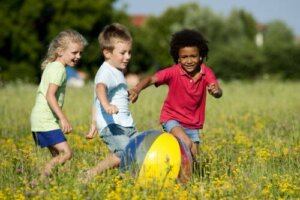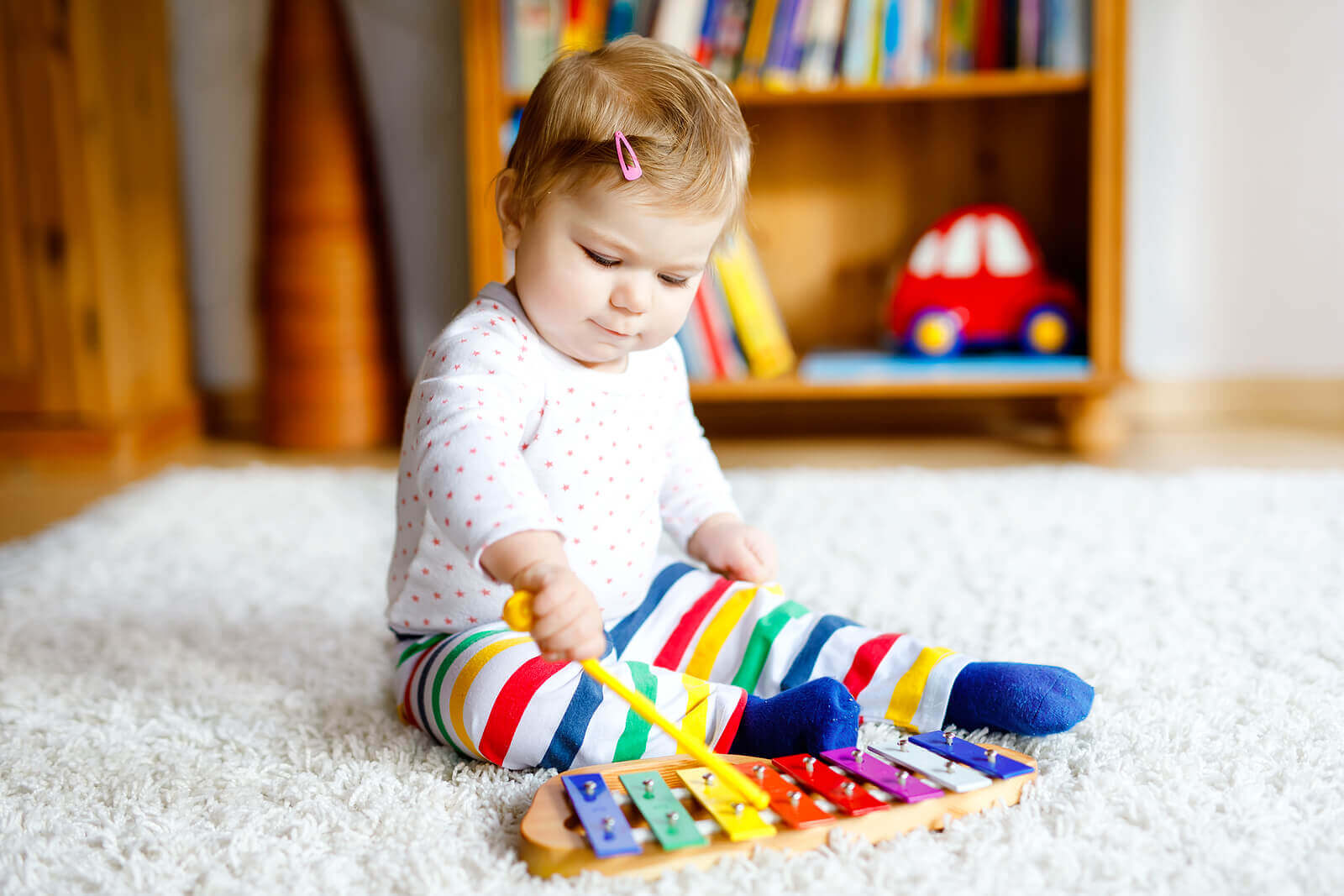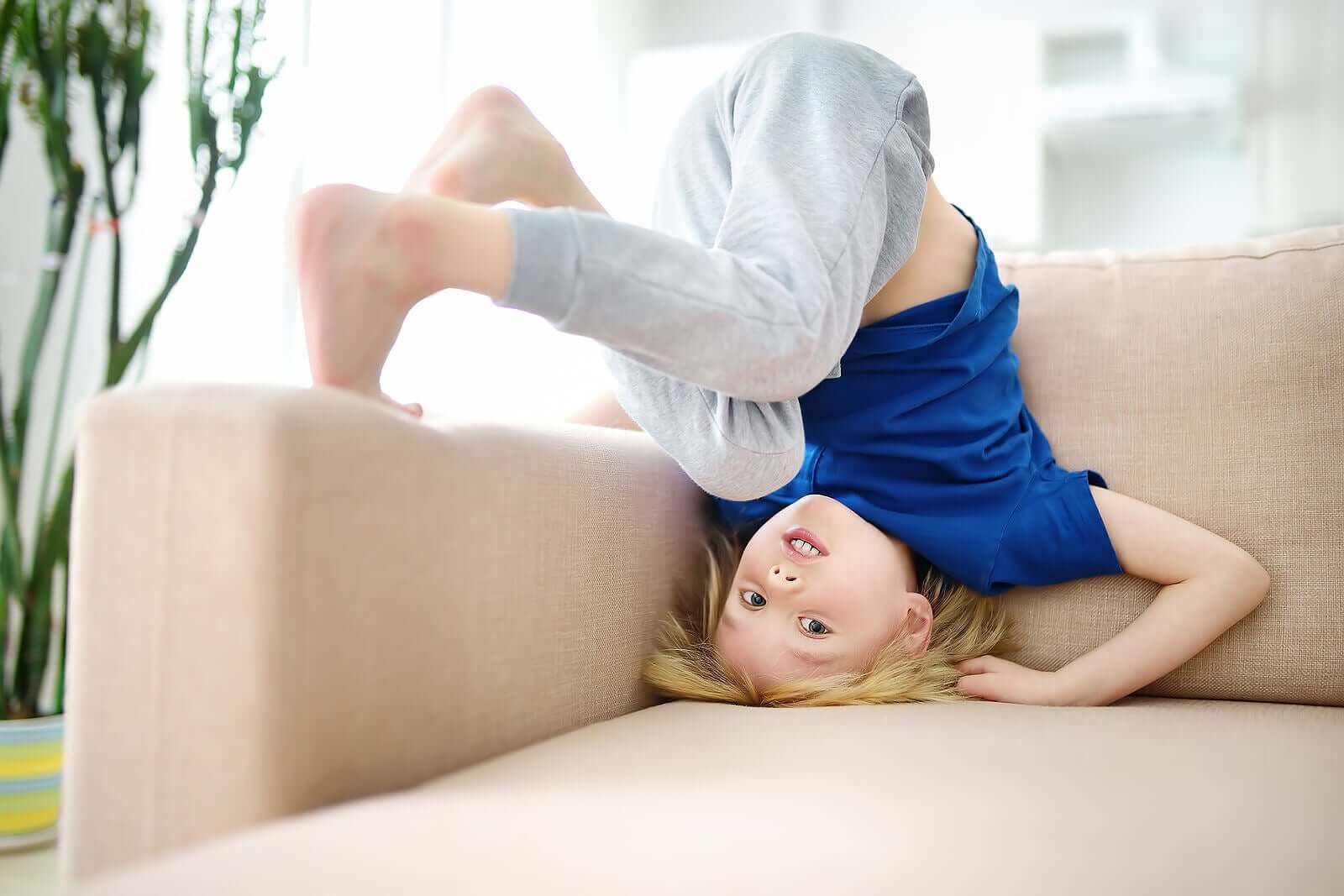Physical Development Milestones in Children from Birth to 6 Years Old

Every child grows and develops at a different rate and you should never make comparisons between one child and another. However, it’s still important to have an idea of what the normal parameters are. With that in mind, we’re going to explain below what the most important physical development milestones are from 0 to 6 years old.
Even though you know your child has his or her own learning pace, you can still identify if your child may have any issues that you should discuss with their pediatrician. Read on to find out about physical developmental milestones up to age 6!
Physical development milestones from birth to 6 years old

Gross motor skills
- As newborns, children begin to lift their chin and hold their head up.
- As they grow, they begin to lift their torso and upper body.
- Also, they begin to roll back and forth.
- At about six months, they can sit up on their own and move all their limbs freely.
Fine motor skills
- At first, little ones develop a strong grip.
- Then, they begin to become aware of their hands and feet and begin to move each finger and toe independently.
- What’s more, children begin to hold toys without knowing what they are, and eventually shake them and throw them.
- Finally, babies learn to hold a bottle and other objects in their hands.
Physical development: 7-12 months
Gross motor skills
- As they reach this stage, children may begin to bear more of their weight.
- Gradually, they start crawling and try standing and walking with assistance.
- Towards the end of this stage, they begin to stop needing assistance and can stand independently.
Fine motor skills
- Children begin to grasp things correctly using the index finger along with the thumb.
- They can feed themselves and pick up objects on their own.
- As they play, they learn to drop one toy in order to pick up another.
Physical development: 1 year
Gross motor skills
- Around the age of one, babies begin to take their first steps.
- At the same time, they learn to throw objects and play more sportive games.
- As they approach the age of two, they can walk independently and also backward.
Fine motor skills
- At this point, children begin to pick up a cup and drink from it.
- Other typical skills you’ll notice include pointing to objects they want, building towers with blocks, scribbling, turning pages in books, and eating on their own.
Physical development: 2 years
Gross motor skills
- Now, children can run and climb.
- They also shake their head and swing their limbs.
- At this age, children also start dancing, rolling, balancing, and jumping up and down.
- This is the stage where they also enjoy playing on the playground.
Fine motor skills
- Children now love to build towers with blocks.
- At this point, they can open doors and undress themselves.
- They also enjoy playing in the water and filling containers with sand.
- Learning to paint is another typical development at this stage.
Physical development: 3 years
Gross motor skills
- By the age of three, children start jumping off the steps and balancing on one leg.
- Their coordination and balance improve as they learn to climb stairs one foot at a time and throw a ball without falling.
Fine motor skills
- By this point, you’ll start to see children drawing lines and circles.
- At the same time, they can also cut and fold paper.
- In addition, they can dress a doll and button their own clothes.
- You’ll also see that they’re interested in more tasks, since they can make their bed and set the table.
Physical development: 4 years
Gross motor skills
- Here, children will pass by you as they run quickly and learn to ride a tricycle.
- They jump and jump all the time using one leg.
- This is a stage when they become super active.
Fine motor skills
- Children become really good at folding paper if they follow an example.
- They can also thread beads and cut pretty well.
- You’ll see an improvement in their drawing and painting skills.
- They’ll also start using clay and molding different objects.
Physical development: 5 years

Gross motor skills
- This is usually the time when children can start playing soccer because they can kick a ball while running. In the same way, they’ll be able to control their body while playing sports and doing other physical activities.
- What’s more, they can control their larger muscles more easily than smaller muscles.
- Climbing is also an activity you’ll see during this age.
Fine motor skills
- Here, children become much better at drawing and copying the objects they see. You’ll see more circles, crosses, and squares in the drawings they create.
- Soon you’ll also see people, cars, and houses in their drawings.
- Their ability to hold a pencil improves and they start cutting with more control.
Physical development: 6 years
Gross motor skills
- By the age of 6, children start jumping rope.
- Also, you’ll see the more adventurous side of their personality as they fall, roll, jump and run all day.
- At this point, little ones enjoy climbing stairs without help.
Fine motor skills
- At age six, your child can draw a house with windows and doors included.
- They enjoy tearing paper and can do it perfectly along the edge.
- At the same time, their writing and letter formation begin to improve.
Now, knowing all this, it’ll be easier for you to identify if your child has any motor difficulties. This is especially true if you notice that time goes by and your little one isn’t reaching the typical physical development milestones according to their age. But remember that if you have any concerns, it’s best to consult your pediatrician.
Every child grows and develops at a different rate and you should never make comparisons between one child and another. However, it’s still important to have an idea of what the normal parameters are. With that in mind, we’re going to explain below what the most important physical development milestones are from 0 to 6 years old.
Even though you know your child has his or her own learning pace, you can still identify if your child may have any issues that you should discuss with their pediatrician. Read on to find out about physical developmental milestones up to age 6!
Physical development milestones from birth to 6 years old

Gross motor skills
- As newborns, children begin to lift their chin and hold their head up.
- As they grow, they begin to lift their torso and upper body.
- Also, they begin to roll back and forth.
- At about six months, they can sit up on their own and move all their limbs freely.
Fine motor skills
- At first, little ones develop a strong grip.
- Then, they begin to become aware of their hands and feet and begin to move each finger and toe independently.
- What’s more, children begin to hold toys without knowing what they are, and eventually shake them and throw them.
- Finally, babies learn to hold a bottle and other objects in their hands.
Physical development: 7-12 months
Gross motor skills
- As they reach this stage, children may begin to bear more of their weight.
- Gradually, they start crawling and try standing and walking with assistance.
- Towards the end of this stage, they begin to stop needing assistance and can stand independently.
Fine motor skills
- Children begin to grasp things correctly using the index finger along with the thumb.
- They can feed themselves and pick up objects on their own.
- As they play, they learn to drop one toy in order to pick up another.
Physical development: 1 year
Gross motor skills
- Around the age of one, babies begin to take their first steps.
- At the same time, they learn to throw objects and play more sportive games.
- As they approach the age of two, they can walk independently and also backward.
Fine motor skills
- At this point, children begin to pick up a cup and drink from it.
- Other typical skills you’ll notice include pointing to objects they want, building towers with blocks, scribbling, turning pages in books, and eating on their own.
Physical development: 2 years
Gross motor skills
- Now, children can run and climb.
- They also shake their head and swing their limbs.
- At this age, children also start dancing, rolling, balancing, and jumping up and down.
- This is the stage where they also enjoy playing on the playground.
Fine motor skills
- Children now love to build towers with blocks.
- At this point, they can open doors and undress themselves.
- They also enjoy playing in the water and filling containers with sand.
- Learning to paint is another typical development at this stage.
Physical development: 3 years
Gross motor skills
- By the age of three, children start jumping off the steps and balancing on one leg.
- Their coordination and balance improve as they learn to climb stairs one foot at a time and throw a ball without falling.
Fine motor skills
- By this point, you’ll start to see children drawing lines and circles.
- At the same time, they can also cut and fold paper.
- In addition, they can dress a doll and button their own clothes.
- You’ll also see that they’re interested in more tasks, since they can make their bed and set the table.
Physical development: 4 years
Gross motor skills
- Here, children will pass by you as they run quickly and learn to ride a tricycle.
- They jump and jump all the time using one leg.
- This is a stage when they become super active.
Fine motor skills
- Children become really good at folding paper if they follow an example.
- They can also thread beads and cut pretty well.
- You’ll see an improvement in their drawing and painting skills.
- They’ll also start using clay and molding different objects.
Physical development: 5 years

Gross motor skills
- This is usually the time when children can start playing soccer because they can kick a ball while running. In the same way, they’ll be able to control their body while playing sports and doing other physical activities.
- What’s more, they can control their larger muscles more easily than smaller muscles.
- Climbing is also an activity you’ll see during this age.
Fine motor skills
- Here, children become much better at drawing and copying the objects they see. You’ll see more circles, crosses, and squares in the drawings they create.
- Soon you’ll also see people, cars, and houses in their drawings.
- Their ability to hold a pencil improves and they start cutting with more control.
Physical development: 6 years
Gross motor skills
- By the age of 6, children start jumping rope.
- Also, you’ll see the more adventurous side of their personality as they fall, roll, jump and run all day.
- At this point, little ones enjoy climbing stairs without help.
Fine motor skills
- At age six, your child can draw a house with windows and doors included.
- They enjoy tearing paper and can do it perfectly along the edge.
- At the same time, their writing and letter formation begin to improve.
Now, knowing all this, it’ll be easier for you to identify if your child has any motor difficulties. This is especially true if you notice that time goes by and your little one isn’t reaching the typical physical development milestones according to their age. But remember that if you have any concerns, it’s best to consult your pediatrician.
All cited sources were thoroughly reviewed by our team to ensure their quality, reliability, currency, and validity. The bibliography of this article was considered reliable and of academic or scientific accuracy.
- Bernaldo de Quirón, M. (2012) Psicomotricidad: Guía de evaluación e intervención (Psicología). Editorial: Pirámide.
This text is provided for informational purposes only and does not replace consultation with a professional. If in doubt, consult your specialist.








